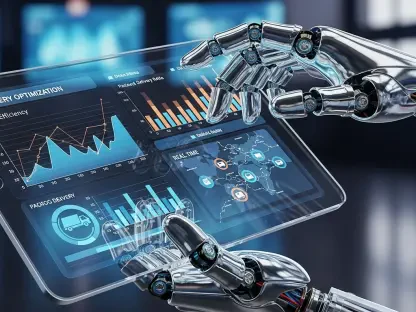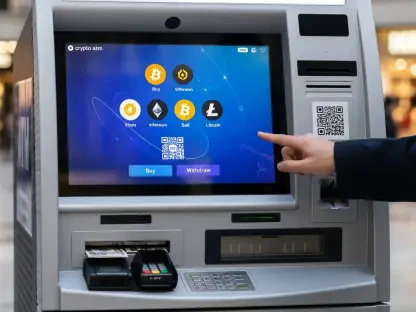The rise of online shopping in the past decade has drastically reshaped the retail industry, leading to significant store closures and casting doubts over the viability of traditional retail malls and high streets. Increasingly, however, there’s a notable shift back towards brick-and-mortar stores in Europe, largely driven by consumer interest in the tactile experience of shopping and the strategic needs of retailers to enhance both their physical and online presence.
Main Drivers behind the Resurgence of Physical Shops
Consumer Interest in Tactile Shopping Experiences
European retailers are heavily investing in physical stores despite the era of digital shopping. This initiative is fueled by an intent to drive sales both online and offline amidst growing competition from dominant e-commerce brands such as Shein, which has revolutionized the fast-fashion segment. Additionally, there’s a push to leverage the renewed consumer enthusiasm for in-person shopping that surged post-COVID-19 lockdowns, reinstating the allure of weekend shopping sprees.
Francesca Marini, a shopper in Italy, reflects this sentiment, emphasizing the immediate gratification gained from physical shopping – a stark contrast to the waiting period inherent in online shopping. This preference highlights the intrinsic value of sensory experiences tied to physical shopping, which cannot be replicated online. The appeal of touching and trying products before purchasing remains a distinctive advantage, fostering a deeper connection between consumers and brands.
The convenience of immediate purchases and the social aspects of shopping have been pivotal in revitalizing physical retail spaces. Alongside consumer interest, retailers continue to explore creative approaches to integrate these physical experiences with their online strategies. By offering exclusive in-store events, personalized services, and unique product displays, retailers aim to craft compelling reasons for customers to visit physical stores, enhancing overall customer satisfaction and loyalty.
Strategic Retailer Investments
Contrary to the declining overall number of stores in Europe – which has dipped slightly from 4.92 million in 2022 to 4.90 million in 2023 according to Euromonitor – retail selling spaces measured in square meters have risen nearly 1%. Projections anticipate a further increase to 2.7% by 2028 compared to 2022 levels, underscoring a shift in focus towards optimizing and expanding existing spaces rather than ceasing operations.
For example, sports retailers saw a surge in demand for products like running shoes and training kits, driven by the public’s newfound appreciation for outdoor activities fostered during the pandemic. This shift towards outdoor lifestyle products is echoed by the successes of brands like Adidas and North Face. Adam Cochrane, an analyst at Deutsche Bank, attributes this trend to the public’s realization of the value of physical activities, a behavior that has persisted post-pandemic.
Retailers are also harnessing data analytics and consumer insights to strategically invest in locations with higher foot traffic and potential growth. By doing so, they maximize their investment returns while catering to evolving consumer behaviors. This strategic focus encourages not just opening new stores but also refurbishing existing ones to create modern, appealing environments that resonate with today’s shoppers.
Retailers’ Strategies to Attract Customers
Innovative Store Concepts
French sports retailer Decathlon epitomizes this strategic shift by adding approximately 80 new stores this year, totaling around 1,700 globally. The company’s aim is not merely expanding its footprint but enriching the customer experience through innovative concepts like repair hubs, rental equipment zones, and sporting areas within the store premises, fostering direct customer engagement and brand loyalty.
Similarly, Italian retailers like Cisalfa plan to open or refurbish stores to keep pace with market trends. The acquisition of SportScheck in Germany has grown their store count to 75, reinforcing their expansion strategy in Europe’s competitive market. These initiatives reflect a broader industry trend where retailers prioritize enhancing in-store experiences and integrating them with digital modalities.
Decathlon’s introduction of recreational elements such as mini fitness studios and product testing zones serves as a testament to the evolving retail landscape. By transforming stores into experiential hubs, retailers not only boost foot traffic but also create an immersive shopping experience that digital platforms struggle to provide. The move towards incorporating entertainment and leisure within stores aims to lengthen customer visits and encourage repeat patronage.
Enhancing Customer Engagement
The correlation between physical store presence and online sales is a key factor in this resurgence. Data cited by Adam Cochrane indicates that a physical store can boost online sales by 10% to 20% within a 20-minute radius, attributed to the appeal of multi-channel shopping experiences. This symbiotic relationship between online and offline channels is evident as stores that close often see a portion of sales lost, which is not fully recuperated through other channels.
Oberalp’s chief sales officer Stefan Reiner attests to this, noting that an increased number of physical outlets in a region amplifies online brand interest. Decathlon’s strategic initiatives, like integrating innovative features such as showrooms and discovery stations, exemplify efforts to blend physical and digital shopping experiences, making product exploration more engaging for customers.
Retailers are increasingly leveraging technology to bridge the gap between their physical and online platforms. By implementing augmented reality (AR) and virtual reality (VR), they provide customers with interactive and engaging ways to experience products in-store. These technological advancements not only enhance the shopping experience but also encourage customers to explore digital catalogs, promotions, and personalized recommendations, driving higher engagement and sales across channels.
Novel Concepts and Enhanced Shopping Experiences
Recreational Elements in Stores
Decathlon’s effort to introduce recreational elements within stores, such as table tennis setups for customers, underscores a broader trend to redefine shopping spaces into leisure destinations. This approach transforms visits from mere transactions to memorable experiences, thereby fostering customer loyalty.
Companies like Inditex are also capitalizing on this trend by offering innovative fitting room concepts equipped with touch screens for style requests, elevating in-store convenience and personalization. Zalando’s commitment to expanding its physical footprint, despite being known for its online prowess, further highlights the strategic importance of establishing multi-channel retail spaces to enhance market presence.
Recreational elements in stores go beyond enhancing customer experiences; they also create community hubs where shoppers can socialize, interact, and engage in activities beyond shopping. This social aspect aligns with changing consumer preferences, where the shopping journey is as much about entertainment and leisure as it is about the purchase itself. Retailers investing in these concepts tap into the trend, offering spaces where customers feel welcomed and engaged, which, in turn, drives customer retention and repeat visits.
The Human Touch and Immediacy
The past decade has seen a significant surge in online shopping, which has profoundly transformed the retail industry. This rise in e-commerce has led to numerous store closures and sparked concerns over the future of traditional retail spaces such as malls and high streets. However, there’s been a recent trend signaling a resurgence in physical stores, particularly in Europe. This shift is primarily driven by consumers who crave the tangible, sensory experience of shopping in person. Additionally, retailers are finding strategic advantages in maintaining a physical presence alongside their online operations. Brands are recognizing that brick-and-mortar stores can complement their digital platforms, offering customers a holistic and immersive shopping journey. These physical locations serve not only as places to purchase items but also as experiential hubs where customers can interact with products firsthand. In this evolving retail landscape, the integration of both online and offline strategies is becoming essential for retailers aiming to provide a seamless and enriched shopping experience.









